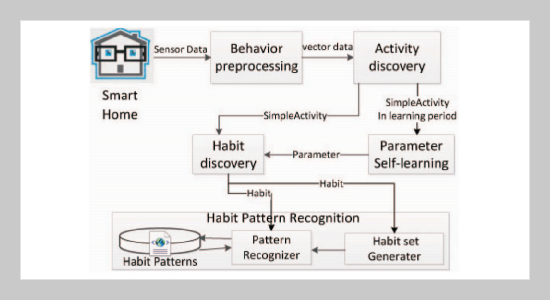Pingquan Wang1,2, Hong Luo This email address is being protected from spambots. You need JavaScript enabled to view it.1, Xinming Li3 and Zhongwen Zhao3 1Beijing Key Laboratory of Intelligent Telecommunication Software and Multimedia, Beijing University of Posts and Telecommunications, Beijing, P.R. China
2Huh-hot University for Nationalities, Huh-hot, P.R. China
3The Science and Technology on Complex Electronic System Simulation Laboratory, Academy of Equipment, Beijing, P.R. China
Received:
July 23, 2015
Accepted:
September 2, 2015
Publication Date:
March 1, 2016
Download Citation:
||https://doi.org/10.6180/jase.2016.19.1.10
Most of the user’s activities are consistent with their habits, therefore in this paper, we propose a new habit pattern learning scheme in smart home to better obtain user’s behavior regulations and habits, which can make the home more intellectually interact with people. By recording the operations on each electric appliance in the form of time series, we firstly find out that the habit can be classified into fixed-length habit and timing habit. Then, we propose habit extraction methods based on the corresponding activity probability and calculation formulas of the habit strength. Since different habits have different variation characteristics on habit strength and time zone, we further propose the self-learning algorithms on time zone and habit strength threshold to obtain the suitable parameters. Furthermore, by defining the association among individual habits into selection, parallel, sequence, cross and inclusion, we can obtain habit set which is a group of habits with inner correlation. In order to adapt to the habit variations, we introduce a habit change factor into the habit pattern discovery algorithm so as to follow the habit changes. Finally, we construct the experimental environment in a real smart home, analyze and calculate the operation records of electric appliances in two months. The experiment results show that the proposed habit pattern learning scheme is effective and efficient.ABSTRACT
Keywords:
Smart Home, Habit Pattern, Time Series, Activity Recognition
REFERENCES
















